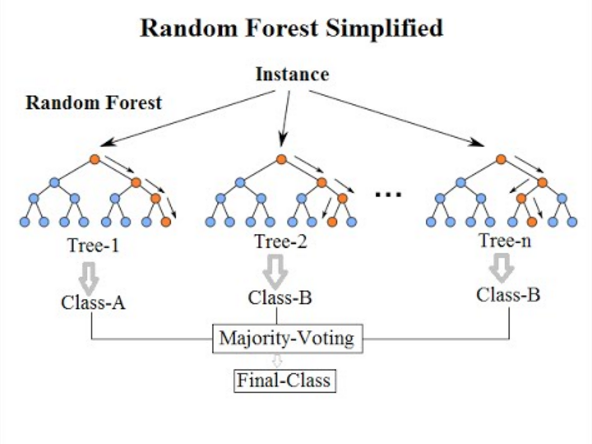Harnessing Movement Patterns and AI to Gauge Biological Aging
Written on
Chapter 1: The Reality of Aging
Aging is an inevitable aspect of life that affects everyone. Our bodies gradually deteriorate over time, albeit at different rates influenced by genetics, diet, and physical activity. While some people may maintain their vitality longer than others, the aging process is universal, impacting everything from our skin to our bones, as well as our internal systems like the microbiome and brain.
One significant reason aging is so pervasive is due to the behavior of senescent cells. These cells cease to divide and develop what's known as a senescence-associated secretory phenotype (SASP). In simpler terms, aged cells release harmful molecules that can affect neighboring cells, accelerating the aging process.
However, there are effective ways to combat this aging effect, with exercise being a primary method. A recent small-scale study demonstrated that participating in an exercise regimen, consisting of both cardio and strength training twice a week, not only improved participants' wellbeing but also reduced certain age-related blood markers. Moreover, this routine appeared to downregulate specific genes linked to cellular aging.
Thus, it's safe to say that staying active is beneficial for those wishing to age gracefully. Even gentle activities like tai chi can be beneficial.
Section 1.1: Introducing MoveAge
Determining your biological age isn't as simple as checking your calendar age. While routine health assessments and blood tests provide some insight, they often don't capture the full picture. Fortunately, research is advancing in the realm of "aging clocks," which are sets of biomarkers that can be used to estimate biological age. Despite their potential, these methods are not yet widely accessible, and their accuracy varies. Some rely heavily on animal studies or laboratory tests that require visits to medical facilities.
What if there was a simpler, more everyday metric to gauge our biological health?
A groundbreaking study has introduced MoveAge, a biological aging predictor based on individual movement patterns. Researchers utilized data from the National Health and Nutrition Examination Survey (NHANES) from 2003 to 2004 for model development and from 2005 to 2006 for validation. This resulted in a comprehensive dataset of accelerometer data, representing physical activity tracked via wearable devices among 2,634 adults aged 18 to 85+.

The scientists employed a random forest machine learning model, utilizing subsets of data to analyze the predictive power of various movement variables. This method has previously been used to identify potential longevity-promoting drugs. Ultimately, their work yielded the MoveAge metric, which combines several movement variables that align with biological age, as determined through comparisons with blood and epigenetic markers in the NHANES data.
Two key factors contributing to the MoveAge score were maximum activity level and activity variance. Impressively, the accuracy of MoveAge matched that of existing blood and epigenetic aging clocks.
Section 1.2: Movement and Mortality Correlation
The researchers also examined mortality data in relation to MoveAge scores. Unsurprisingly, higher rates of accelerated aging as indicated by MoveAge were linked to an increased risk of mortality. This correlation is logical, as aging, illness, and injury tend to diminish movement and activity levels, which can heighten mortality risks.
Interestingly, the NHANES dataset included nutritional information gathered from questionnaires. In younger individuals, there was no significant correlation between MoveAge and specific dietary components. However, older participants exhibited correlations between better MoveAge scores and higher consumption of fiber, magnesium, and vitamin E.
Additionally, the dataset contained information on medications taken by participants. The researchers identified one drug, Doxazosin, used for treating enlarged prostate and hypertension, that correlated with improved MoveAge scores. Experiments in the roundworm C. elegans indicated that this compound could extend both lifespan and healthspan.
(WARNING: Always consult with a healthcare professional before starting any medication. Keep in mind that findings in roundworms may not directly translate to human health.)
In conclusion, the authors affirm that their results align with recent studies demonstrating the ability to accurately predict biological age using accelerometer-based movement data. They introduce an additional model for assessing biological age in the field.
However, it’s crucial to note that correlation does not imply causation. Individual differences will lead to variations in MoveAge scores and responses to changes in these scores. For instance, an injury may lower your score but does not necessarily indicate biological aging.
Chapter 2: Future Implications of MoveAge
As we await the development of applications that can measure biological age, the prospect of utilizing movement data for health assessments offers exciting possibilities.
The first video, titled "Healthy Aging Speaker Series: Neural Control of Movement and the Aging Brain," discusses the intricate relationship between movement and the aging process, providing valuable insights into how neural function influences our physical capabilities as we age.
The second video, "[ENGLISH] Full | Machine Learning for Advancing Human Aging Research Webinar," delves into the role of machine learning in enhancing our understanding of aging, showcasing innovative approaches to research in this critical field.
You just read another post from In Fitness And In Health: a community committed to sharing knowledge and insights for healthier living. If you'd like to receive more stories like this, join our newsletter.